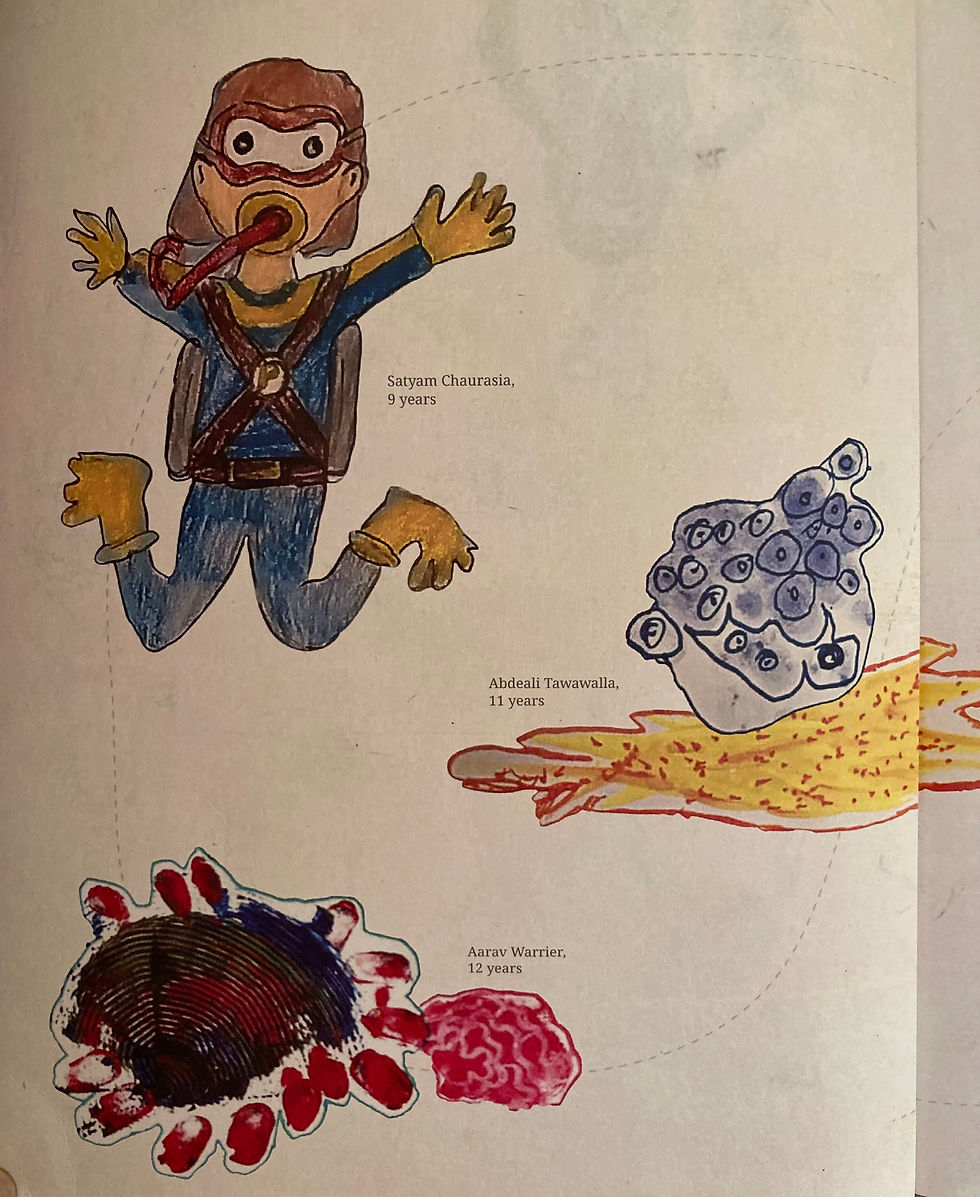Coral Woman...a dive into India's Coral Reefs.
- JoAnne Saldanha
- Mar 24, 2022
- 3 min read
This review was written for the Sustainibility Next blog.

Uma Mani was an average housewife, whose life centered around home and family. On watching a film about coral reefs at a French class, she became fascinated with corals. But Uma didn’t know how to swim, let alone dive. So, she picked up her brushes and began to paint the beautiful underwater world that enchanted her, using pictures that she and her husband collected. Soon, she began to exhibit her paintings. It was at one of these exhibitions when a flippant remark from a guest, inquiring whether she had actually seen a coral reef herself, hurt Uma. The comment ignited a spark that inspired her to learn more about the corals she loved. Overcoming her fears and battling the negativity that besieged her, Uma learned how to dive, and was rewarded with a ringside view of a world that rivetted her.
With every dive, she began to realize the devastation the coral reefs were facing. Hungry to know why they were getting destroyed, she talked and questioned. She learned about the ill-effects of coral mining, the threat of non-native algae that had been thoughtlessly introduced into the ecosystem, the effect of sewage, fly ash from thermal plants, pollution, and climate change, on the corals. So, she began raising awareness about the importance of coral reefs and the need to protect them at every opportunity she got.
Based on a documentary film of the same name by Priya Thuvaserry, Coral Woman published by Harper Collins, is filled with the most stunningly detailed, realistic illustrations by Sanket Pethkar, bringing alive the world that captivated Uma. Illustrations by children who participated in a workshop based on this book, pepper the pages, lending an imaginative feel to a factual read and encouraging young readers to follow suit. Lubaina Bandukwala’s writing flows easily, weaving in various facts into the narrative.

In my experience, children often connect to stories about ‘older people’ when they are able to learn a little about their childhood. This gives them an opportunity to put themselves in the protagonist’s shoes as they journey through the story. However, by missing out on this little detail, the book skips an opportunity to enhance the connections a child reader could make with it.
Why was Uma so taken in by the film? Was she always this curious? Such questions might inadvertently come up while reading the story. In some places, details could have been avoided. For instance, the mention of the rude guest as being from Delhi, was unnecessary for it didn’t add anything to the story but might be seen as reinforcing a stereotype.
While the environmental message on the destruction of coral reefs is strong, Uma’s story also sends out a subtle message on the power of a woman to follow her dreams at an age that is traditionally housebound, when given the space and support. It underlines how learning can happen at any age and how it is never too late to follow one’s passion – a message I hope young readers hold onto as they dive into the ‘unknown’.
The book is conceptualised and supported by Avid Learning, an ESSAR initiative.
I have to add, that after writing this review, a question kept nagging me. Why a film and book was made about this lady. I have searched online for evidence of her work in her cause and have not found too many details, beyond the film and her own website. A detailed description of her work may underline the importance of this book.









Commenti